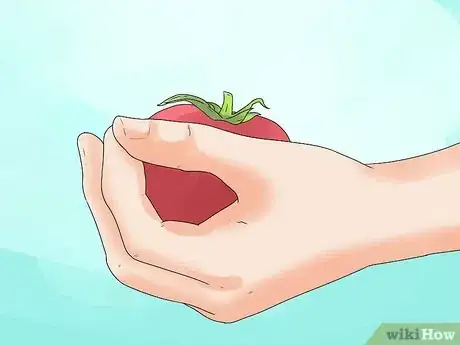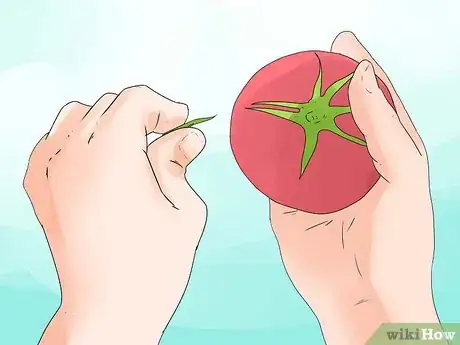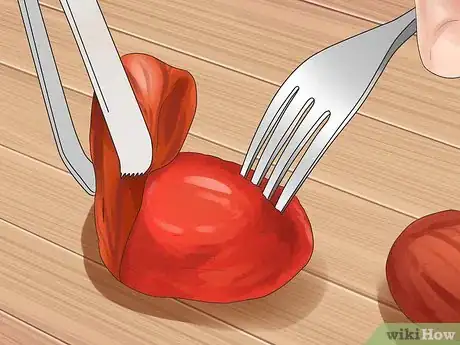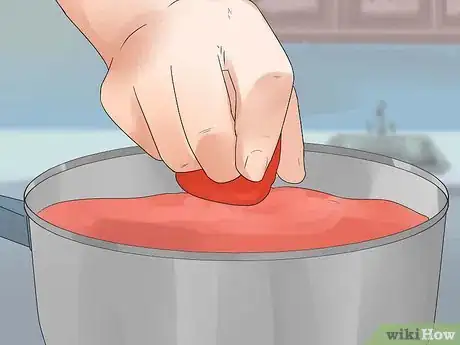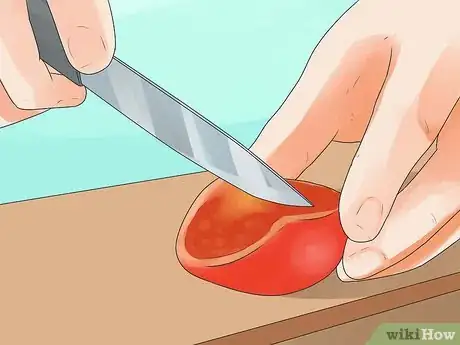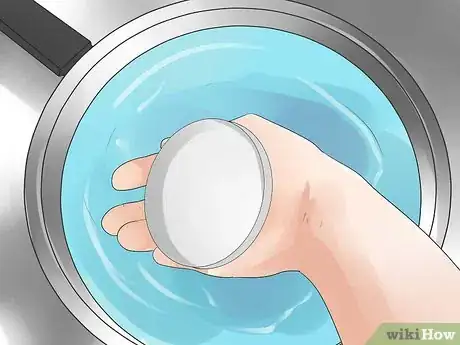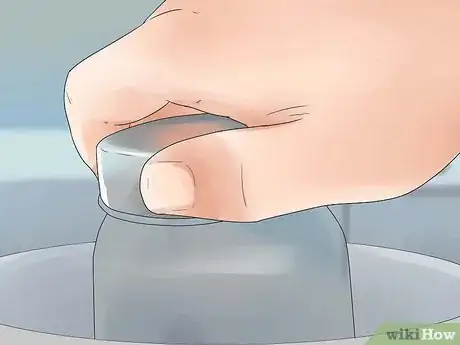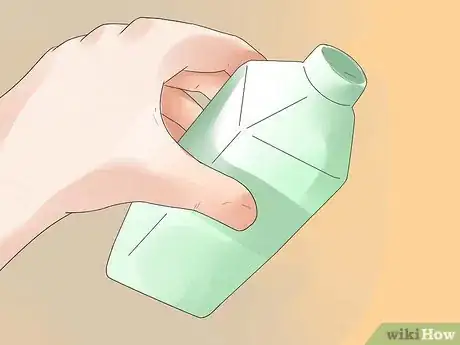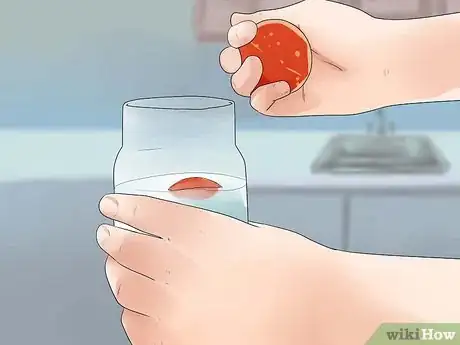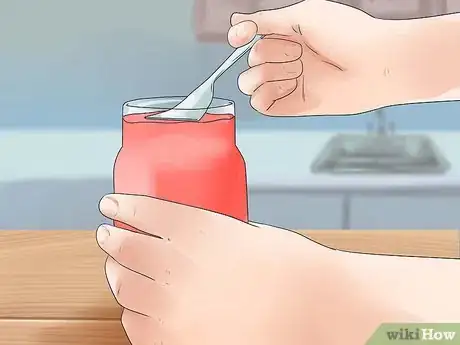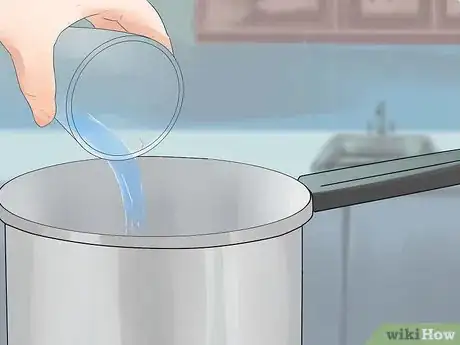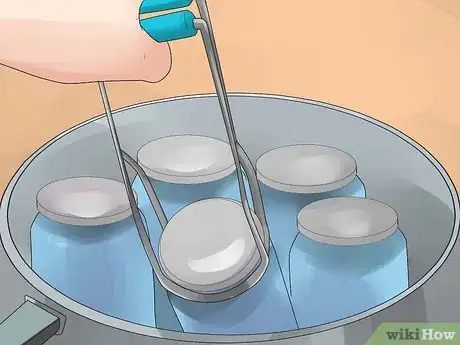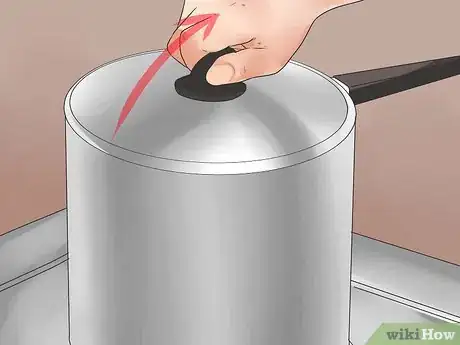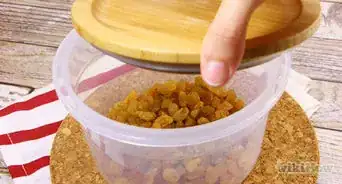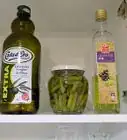wikiHow is a “wiki,” similar to Wikipedia, which means that many of our articles are co-written by multiple authors. To create this article, 12 people, some anonymous, worked to edit and improve it over time.
wikiHow marks an article as reader-approved once it receives enough positive feedback. This article received 12 testimonials and 100% of readers who voted found it helpful, earning it our reader-approved status.
This article has been viewed 139,524 times.
Learn more...
Want to capture the taste of summer in a jar? You can do just that by canning tomatoes--that way, in the deepest, darkest day of winter, you will be able to open up a jar and immediately feel like you are basking in warm summer sun. Whether you grow your own tomatoes, or purchase them in bulk during the growing season, canning your own tomatoes can also save lots of money. Set aside several hours to complete the canning process.
Steps
Readying the Tomatoes
-
1Choose your tomatoes. Any variety of tomatoes can be used, but make sure the fruit is not too ripe. Overripe tomatoes are bad for canning due to their high acid content. Gently press on the tomatoes to make sure they are still firm. Look over your tomatoes to make sure they do not have any bruises.[1]
- If you want to can green tomatoes, you’re in luck. Green tomatoes are more acidic but can still be canned, according to the USDA.
-
2Wash and stem the tomatoes. Once they are free from dirt, slice off the ends that have the stems, and cut an "X" shape at the bottom of the other end. The ‘X’ shape will make it easier to peel off the skins later.Advertisement
-
3Remove the tomato skins. To do this, you will need to bring a pot of water to a boil. You will also need to set out a bowl filled with ice water. Once the water is boiling, drop a few tomatoes in at a time. Let them sit in the water for about a minute (though you can take them out after 45 seconds if you want to.)[2]
-
4Remove the tomatoes from the water. Immediately plunge them into the bowl filled with ice water. Doing this will help to make the tomato skins fall right off. Remove the skins and place your tomatoes on a cutting board..
-
5Cut your tomatoes into quarters. While quartering your tomatoes, remove any other bruises or tough spots. If you didn’t already, remove the tough part where the tomato attaches to its stem.
Sterilizing the Jars
-
1Prepare the canning jars. Anytime you can fruit or vegetables, you must sanitize the jars. To do this, bring a large pot of water to a boil (it can be the same pot you are later going to use for sealing the jars and canning the tomatoes.) Inspect the jars to make sure they are free from cracks or nicks and then place the jars in the water and let them boil for several minutes.[3]
- You can also sterilize your jars by putting them in your dishwasher on the hottest cycle. If you have a ‘sterilize’ option, choose it.
-
2Sterilize the lids. The lids should be dent free, and the bands should fit tightly. Set the bands aside to dry, and place the jars and lids in a pot of hot, but not boiling, water. Let the pot simmer on the stove at low heat until you are ready to use the jars.
-
3Carefully remove the jars from the hot water. To do this, you should use tongs. Be very carefully as the jars will be very hot. To remove the lids, you can either use the tongs, or you can use a magnetic lid lifter. These lid lifters can be purchased at your local kitchen supply store.
Canning the Tomatoes
-
1Choose your lemon juice. You can either use fresh lemon juice, or lemon juice from a bottle. The lemon juice will be added to the jar along with the tomatoes. The juice helps to prevent the tomatoes from spoiling while they are in the jars, and also helps to retain the color and flavor of the tomatoes.
-
2Fill the jars with the tomatoes. Place the jars on a heat resistant surface and begin spooning the quartered tomatoes into the jars. Fill the jars until there is only about ½ of an inch of space left at the top of the jars. Add two tablespoons of lemon juice. You should also add either boiling water or hot tomato juice so that the jar is filled up to ½ an inch away from the top.[4]
- You could also consider adding other ingredients to enhance the flavor of the tomatoes. Cloves of garlic, peppers, or a sprig of basil make delicious additions to canned tomatoes.
-
3Remove any air. Once you have added the lemon juice, gently press on the tomatoes with a spoon to release air bubbles. Air bubbles are bad because they can let bacteria get into the jars, thus spoiling your canned tomatoes. You should also slide a sterilized knife or plastic spoon along the inside wall of the jar, releasing any air trapped there.
-
4Wipe away any drips along the top and sides of the jar. Place a lid on top of the jar and screw on the band with your hands.
Using the Canner
-
1Add water to the pot that you will use as your canner. The pot should be large enough to fit a batch of canning jars. Place the elevated canning rack in this pot, and fill halfway with water. Bring to a simmer. If you are using an actual canner, the rack should have come with it. If you are just using a pot, you can use a cooking rack so long as it fits in the pot.
- If you plan on doing a lot of canning, particularly of low-acid items like tomatoes, you should think about investing in a pressure canner. They take less time and are reliable. If you have a pressure canner and are planning on using it now, follow the instructions provided with the canner when you bought it.
- If you do not have a cooking rack, you can just place a washcloth on the bottom of the pot. This will keep the glass jars from cracking against the metal of the pot.
-
2Place each filled jar on the canning rack. Once all the jars have been placed, lower the canning rack. Pour enough water into the simmering canning pot to cover the jars by two inches. Place the lid on the canning pot and bring to a boil. If you are using pints, boil the jars for 40 minutes. If you are using quarts, boil the jars for 45 minutes. You should also keep in mind that cooking time will vary based on what altitude you are canning at.[5]
- 0 to 1,000 feet (0.0 to 304.8 m) above sea level: 35 minutes for pints, 45 minutes for quarts.
- 1,001 to 3,000 feet (305.1 to 914.4 m): 40 minutes for pints, 50 minutes for quarts.
- 3,001 to 6,000 feet (914.7 to 1,828.8 m): 45 minutes for pints, 55 minutes for quarts.
- Above 6,000 feet (1,828.8 m): 50 minutes for pints, 60 minutes for quarts.
-
3Remove the lid from the canning pot, and turn off the heat. Allow the pot to cool for 20 minutes, and then remove each jar with the lifter. Place the jars on a towel. Allow jars to cool for a whole day, and then test the seal on the jars by pushing down in the center. The center should not move. If it does, use the tomatoes immediately.
-
4Store sealed jars in a cool pantry, and use within one year. Do not be surprised if you see the canned tomatoes floating above a layer of liquid inside the jar--this is totally normal.
Community Q&A
-
QuestionIs my sauce okay to use if it separated in the jar?
 Community AnswerYes, it is okay to use; just mix them back together. If it tastes or smells bad, throw it out.
Community AnswerYes, it is okay to use; just mix them back together. If it tastes or smells bad, throw it out. -
QuestionCan I can green tomatoes?
 Community AnswerGreen tomatoes are more acidic, but can still be canned.
Community AnswerGreen tomatoes are more acidic, but can still be canned. -
QuestionDo I add canning salt?
 Community AnswerYou can add 1/2 teaspoon of salt per pint or 1 teaspoon of salt per quart. This is optional and not a requirement.
Community AnswerYou can add 1/2 teaspoon of salt per pint or 1 teaspoon of salt per quart. This is optional and not a requirement.
Things You'll Need
- Tomatoes
- Lemon juice
- Canning jars, lids, and bands
- Canning pot
- Canning rack
- Jar lifter
- 3 additional pots
- Towel
- Knife
References
About This Article
To can your own tomatoes, start by removing their stems and cutting an "x" shape in the other end so the skin is easier to peel off later. Then, place your tomatoes in a pan of boiling water for 1 minute before immediately transferring them to a bowl of iced water as this will make the skins fall off. Sterilize your jars and lids by placing them in a pan of hot water, then chop your tomatoes and spoon them into the jars. Finish by adding the lemon juice, putting the lids on, and boiling the jars for 40-45 minutes to seal them. To learn where you should store your jars of tomatoes, read on!
